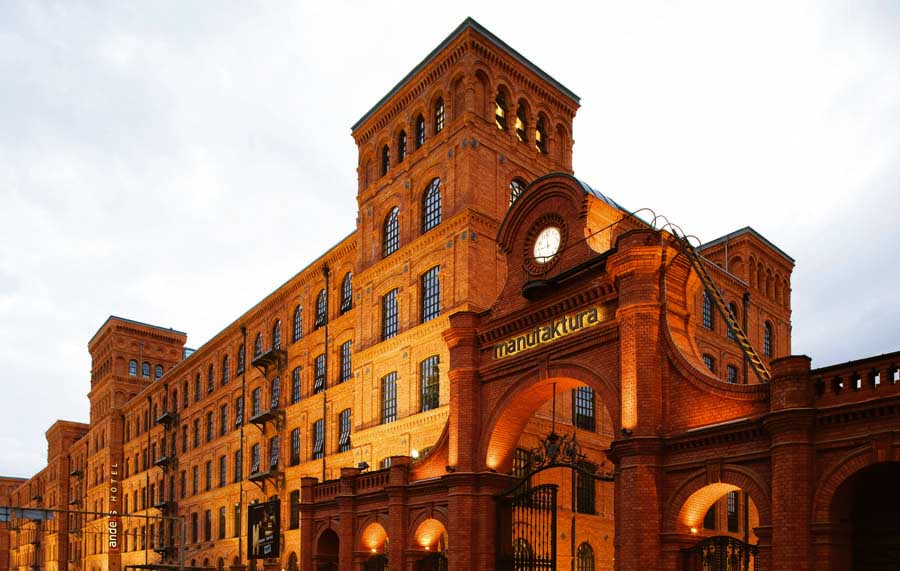
Manufaktura
The former cotton mill owned by Izrael Poznanski was extensively renovated in 2006. A shopping center and high-quality office space are now located in the red brick halls. The "Manufaktura" is more than just a shopping center. The square around the old factory buildings gather, has become the marketplace of Lodz. In summer there is a "beach club" with deck chairs and sand, in winter an ice rink and a small Christmas market. A large cinema with 15 screens, a theater and the ms2 museum also offer a lot of culture in the former factory.
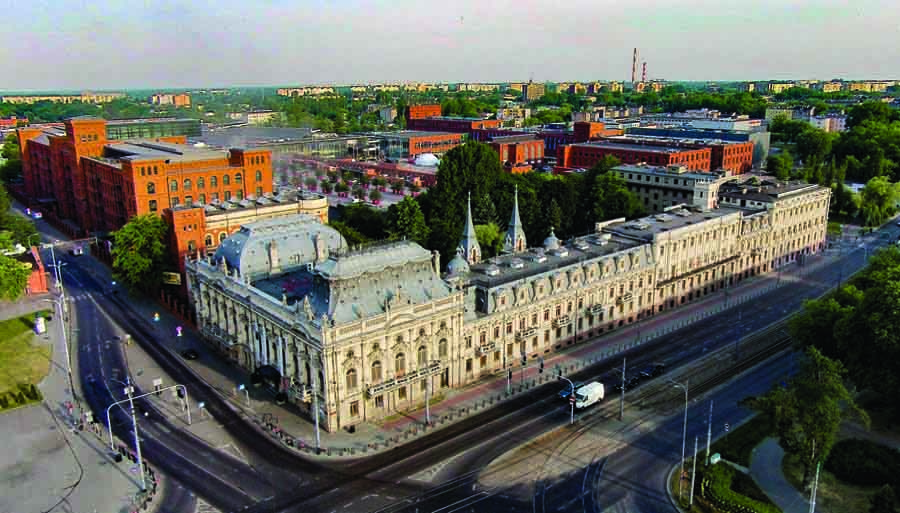
Poznanski Palace
The "Poznanski Palace" was the magnificent residence of the textile entrepreneur Izrael Poznanski. Poznanski was the owner the cotton factory "Manufaktura". The "Poznanski Palace" is very different from the red brick industrial buildings. The bright facade of the French-style palace is unique in Lodz. The L-shaped building forms a striking corner and stands directly on the park "Staromiejski", the park between the old town of Lodz and the new industrial city along the Piotrkowska. As early as 1860, a two-storey building stood here, which was bought by Izrael Poznanski along with the huge property behind, were he built his factory. Poznaski turned this building into his residence and extended it from 1888 onward. The palace was most likely planned by the architects Jung and Rosenthal. Today the "Poznanski Palace", is used as the Historical Museum of the Lodz.
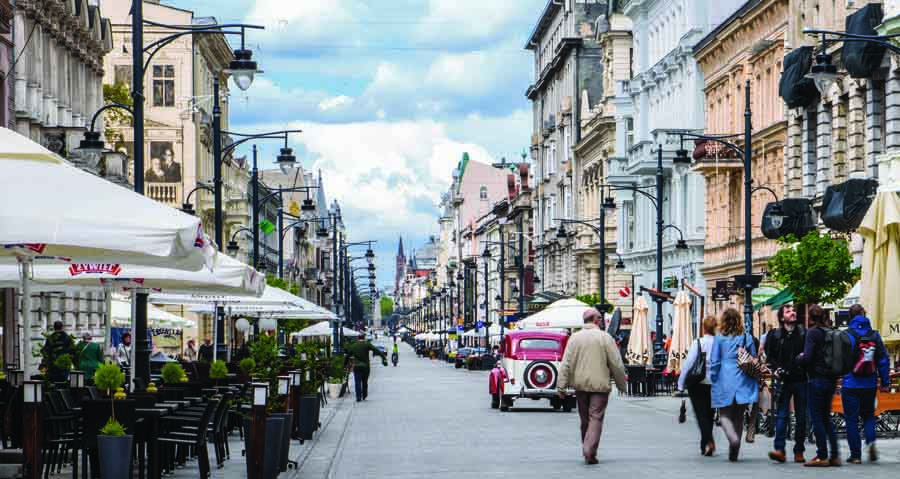
Piotrkowska
The ulica Piotrkowska is a 4.9 km long shopping street that runs straight through the city center of Lodz. The former country road runs in a north-south direction and has developed into the center of the city. The "Piotrkowska" for more then one kilometer a pedestrian zone. The small village of Lodz grew fast in the 19th century and therefore has no medieval town center. The Polish industrial metropolis has therefore developed like an American city in a right-angled grid. The "Piotrkowska" was created like an American Main Street or a Broadway.
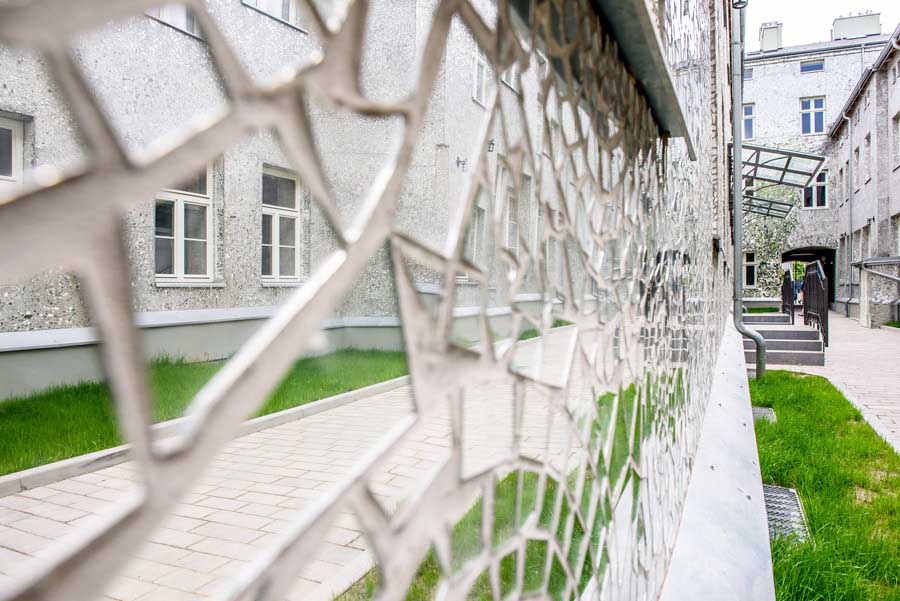
Pasaz Rozy
The "Pasaz Rozy" (Rose Passage) is a passageway from the shopping street Piotrkowska to Zachodnia street. Here is the art academy AOIA Akademicki Osrodek Inicjatyw Artystycznych. The special feature of the "Pasaz Rozy" are the houses, which were covered with mirror fragments. As a result, the gray courtyard has turned into a tourist attraction of Lodz.
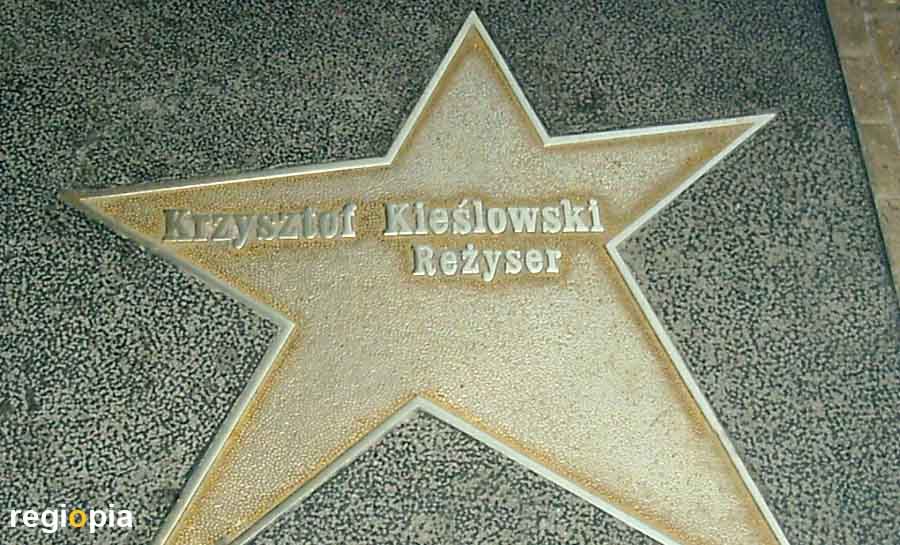
Aleja Gwiazd
Lodz is considered the film capital of Poland and a Walk of Fame like in Hollywood. On the Avenue of Stars "Aleja Gwiazd" the stars of the Polish cinema are honored. The most famous stars are Roman Polanski and Krzysztof Kieslowski.
Piotrkowska/Aleja Artura Rubinsteina
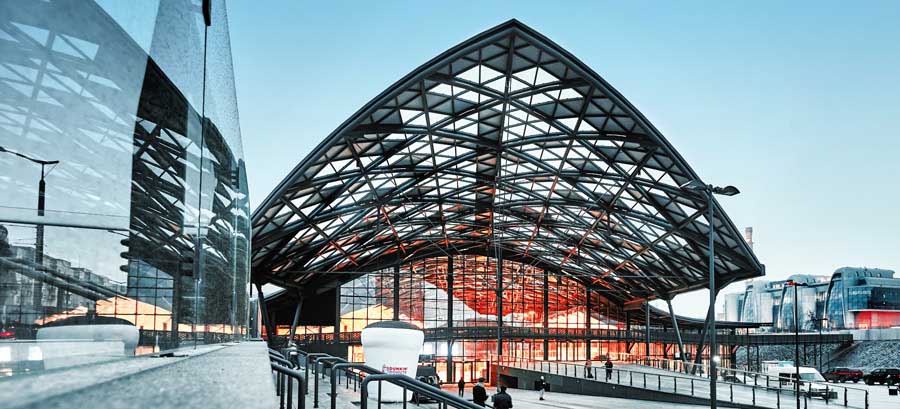
Station Lodz Fabryczna
Around the new railway station "Lodz Fabryczna" some new buildings have been created. The area around the train station is also called the new center of Lodz. In 1865 the railway line to Warsaw was opened here. The historic station building from 1868 by architect Adolf Schimmelpfennig was integrated as a replica into the new structure. In 2016 the new railway station "Lodz Fabryczna" was opened. The conversion turned the old terminus into a modern transit station.
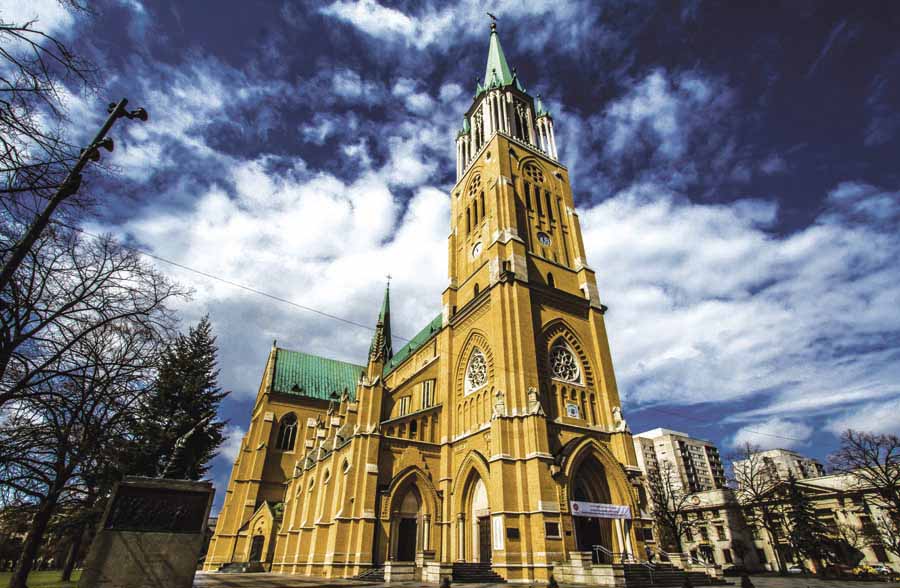
Lodz Cathedral
The construction of the Łódź Cathedral began in 1901. In 1912 the church was consecrated and completed in 1927. The Catholic Church of St. Stanislaus Kostka was raised to a cathedral in 1919 when the bishopric of Lodz was created. The 104 m high bellfry is still one of the tallest in Poland. The neo-Gothic cathedral was designed by the architect Emil Zillman and executed by the company Wende Zarske from Lodz. By then Lodz was part of Russia, so the draft had to be approved in St. Petersburg. The Gothic-looking nave was cast from reinforced concrete. During the Second World War the cathedral was used as an arsenal by the German army. During the war the windows nave been destroyed. The roof of the Cathedral was destroyed by a fire in 1971. In 1978 the Stanislaus-Kostka Cathedral was rebuilt.
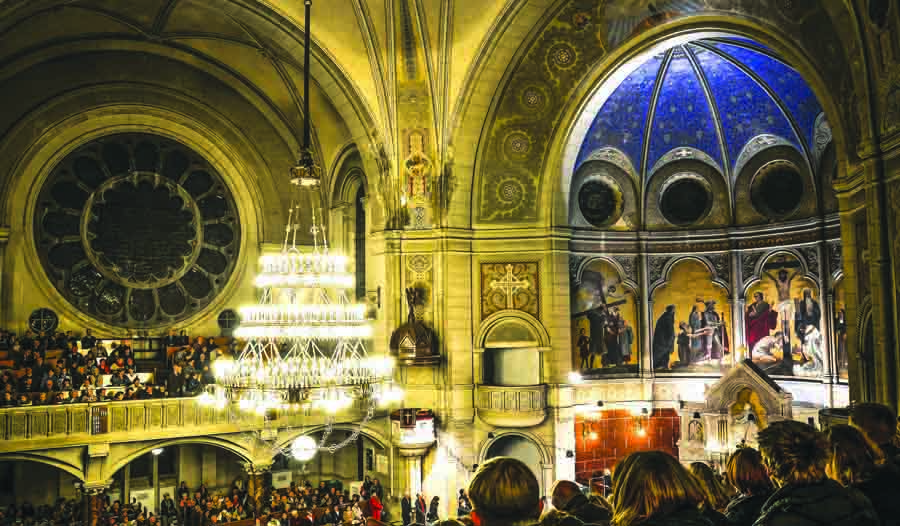
Kosciol sw. Mateusza
The Kosciol sw. Mateusza "Matthew Church" is one of the few Protestant churches in Lodz. The neo-Romanesque church was built from 1909 until 1928. The Lodz architect Johannes Wende designed the church for the Evangelical-Augsburg congregation together with the Berlin architect Franz Schwechten, who also designed the Kaiser Wilhelm Memorial Church and the Grunewald Towerin Berlin. The church tower is 80 meters high and the dome has a diameter of 17 meters, making it one of the largest churches in the city. In Lodz, the Matthew Church is known for its excellent acoustics and its organ. Therefore, concerts are often held here.
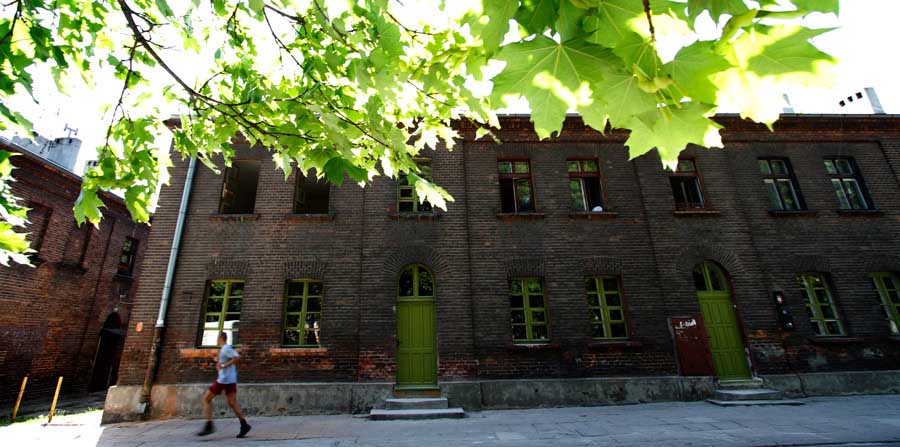
Ksiezy Mlyn
Karl Wilhelm Scheibler was the richest factory owner in Lodz. He built a town for his workers in the southeast of Lodz. In addition to workers' dwellings and factory buildings, a school, two hospitals, shops, a gasworks and a fire department were built. The "city in the city" from the 19th century is today a listed ensemble. In the street "Ksiezy Mlyn" one can visit a well-preserved working class settlement of red bricks. To the south of Ksiezy Mlyn Street is the former "Scheibler factory" which has been renovated and shines in its former glory. "Ksiezy Mlyn" is a remarkable monument of the industrial history of Lodz.
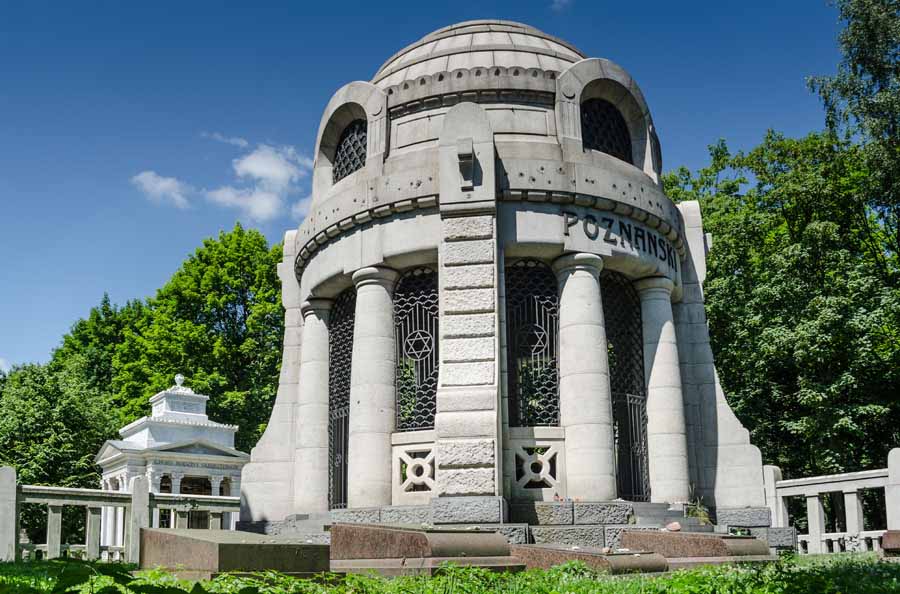
Jewish cemetery Lodz
The "Cmentarz Zydowski" is the second largest Jewish cemetery in Europe. Before the Second World War about 160,000 Jews lived in the city. The most famous Jew of Lodz was the manufacturer Izrael Poznanski, his resting place is considered to be the largest Jewish grave monument in the world. After the Holocaust, not much was left of the Jewish community. The Jews were imprisoned in the Litzmanstadt ghetto and murdered in German concentration camps. Today only a few Jews live in Lodz.
Map of Lodz
ads
Travel Guide Lodz
ads
ads


